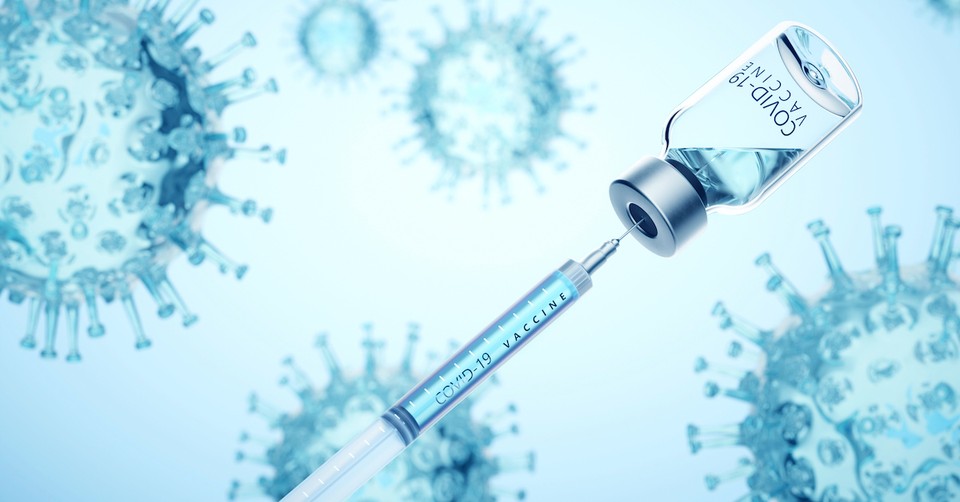What Good Is the Current COVID-19 Vaccine? (Part 4 - the Variants)

We are all tired of hearing about COVID-19 vaccines, COVID-19 variants, and breakthrough infections and we are tired of the worry which comes with hearing the latest news about hospitals being overwhelmed, so this is a good question. However, as is often the case, before we can answer the question about the current vaccine we need to first decide if the assumption made about variants is accurate, using a few simple questions.
How do variants occur?
A variant is an organism in which some changes (mutations) have been made to its genetic code. In our case, we are concerned with the specific coronavirus called the SARS-CoV-2 virus, which causes COVID-19 disease.
In nature, such alterations to the genetic code commonly come about by the process of “random” mutations as the virus is reproducing (replicating) itself. “Random” just means that the types, position, and number of the mutation changes occur by chance.
- The type of mutation may involve such things as one of the genetic “links” dropping out of the genetic chain altogether, or one type of “link” taking the place of a different “link” in the chain.
- The particular place in the chain at which a mutation happens is variable.
- The number of mutations that may occur during one replication is variable.
These mutations may either kill the organism, cause obviously new or different characteristics in the function of the virus, or have no effect at all. Disease surveillance groups around the world have been following a number of COVID-19 variants over the last two years, yet only two variants of the original 2019 Alpha strain, Delta and Omicron B.1, have turned out to be of major significance to the world so far.
The most significant change in each of these variants has been related to their increasing communicability. Not only do they pass from one person to another more rapidly than in the original COVID-19 disease, but they also are able to infect more people in any social situation. With each variant, the communicability has increased.
Fortunately, the Omicron strain seems to have been less severe in its effects so that although the health system has again been overwhelmed with hospitalizations and continuing deaths, it has been due to the huge numbers of people infected, rather than to the increased severity of the variant. In the providence of God, we have not yet had a more communicable variant which also causes a major increase in the severity of the disease. Yet it could happen!
Why do these new variants keep occurring?
To answer that question, we need to understand two important facts about RNA viruses like the SARS-CoV-2 virus.
1. Once in a suitable place to reproduce, mRNA viruses reproduce very quickly, and each reproduction provides chances for more mutations to occur.
One estimation of the speed at which infectious COVID virions reproduce, based on other estimations of how many of our cells are infected and how quickly each virus replicates, places the total number of new infectious virus particles produced at between 10 6 – 107 each day. For those of us who barely scraped through math, that means 1,000,000 – 10,000,000 (1 million -10 million) new virus particles produced in an infected human body every day. Mind-boggling, right?
2. The only suitable place for viruses to reproduce is inside living cells.
This means that:
-The more available cells there are around to be infected (think unprotected and disease-free bodies), the more reproduction can go on, and the more mutations can arise. Currently, those possibilities include the approximately 30 million unvaccinated people in the U.S. and the staggeringly great numbers of unvaccinated people around the world. [Less than 10% of Africans have yet been fully vaccinated]. While this situation continues there will continue to be ongoing sources of variants.
-The longer the time that the virus remains active in a sick body, the more viral reproduction goes on. So people who have severe cases of COVID-19 can end up needing to spend weeks in the hospital before the disease is overcome involuntarily become possible sites of virus mutation.
-The more people who are protected from getting COVID-19, the less chance there is for variants to develop. This would seem to suggest that protection provided by immunization (i.e. not getting the disease) would be more helpful than everybody being exposed to the virus and “getting it over and done with” as promoters of “COVID-19 Parties” have suggested. (Similar to the Chicken-Pox Parties of the 1950s)
-Even in the case of breakthrough infections in fully immunized persons, the illness is usually shorter in length and less communicable in nature (both of which work against variant development).
Is it possible to stop COVID-19 variants from developing?
No. It is impossible to totally rule out more variants of the coronavirus SARS-CoV-2 appearing at some time, so the assumption made in the topic question is basically correct. But the number of variants can be limited and their effect on the human race can be minimized by increasing the level of protection (immunization) around the world in order to reduce mutation sources for the virus, maintaining the ongoing surveillance of the virus/vaccination effectiveness, changing the vaccine if needed, and using the increasingly available new anti-viral treatments immediately to limit the length and severity of the illness for those who do become sick.
If there will always be variants, what good is our current vaccine?
I think we all started out with high expectations of the COVID-19 vaccines. After all, we really needed good news following a shocking year of COVID-19 deaths and lockdowns. The news of 94% protection from the COVID-19 disease reported by Pfizer and Moderna vaccine trials and the 88% protection reported against severe COVID-19 disease by the J&J vaccine was very welcome.
But right now, after the original COVID-19 Alpha strain was rapidly taken over by the Delta strain (with some mutations of the spike protein), and the Delta strain, in turn, was rapidly taken over by the Omicron B.1 strain (with even more mutations), we need to ask if there is any value left in the current vaccine. After all, the healthcare system is again overloaded and vaccinated people are getting breakthrough infections. But I want to encourage you – the vaccines are still working enough.
Let’s look at several very important effects of the current vaccines. To do this I am going to use the figures from the CDC’s Data Tracker posted on February 3, 2022. Since collecting data takes time, these figures reflect information from December 2021 and January 2022, which was at the height of the now decreasing Omicron infection.
How the vaccines are working against the severe (hospitalization) effects of COVID-19.
In the month of December 2021, the rate of COVID-19 hospitalizations in unvaccinated adults who were older than 18 was 16 times higher than that of fully vaccinated people. To put this in real numbers, on December 4, for example, fully vaccinated persons in the age range of 50-64 were hospitalized at the rate of fewer than 10 people for every 100,000 of the population. On the other hand, unvaccinated persons were hospitalized at a rate of 80-90 people for each 100,000 of the population. Check out the graphs on the Data Tracker link given above.
It is clear that full immunization still provides a high degree of protection against severe COVID-19. The small number of vaccinated people who ended up in hospital with breakthrough COVID-19 infections during this period were most commonly the elderly (65+), which may have been due to aging low immune responses, a longer period since original vaccination, or the multiple co-morbidities that many have at that age (see more detail here). The fact is that most cases of breakthrough infection in fully vaccinated people have been mild enough not to require hospitalization.
How the vaccines are working to prevent post-COVID-19 infection problems, AKA “long-haul COVID” or “long COVID.”
Long COVID is one of the names now given to a collection of symptoms that hang around or even kick in for the first time, after a COVID-19 infection. Symptoms can last anywhere from 4-6 weeks, six months, a year, or beyond. Just as the COVID-19 disease itself can affect any system of the body, the long COVID symptoms can occur in any system of the body, although the most common symptoms are fatigue, insomnia, brain fog, shortness of breath, continued loss of smell/taste, and cardiac problems.
The problem is not well-understood, but now that it has become recognized as an entity, the number of diagnosed sufferers is rising. Productive research is confirming that COVID-19 induced physical changes may be the cause of long COVID symptoms. One example is a study using U.K. Biobank brain images taken before and after COVID-19 infection which confirms changes in the olfactory (smell) and gustatory (taste) tracts in the brain. In other words, the virus can leave permanent damage.
The AMA suggests that anywhere between 15-80% of infected people might experience long COVID after recovering from the initial infection. It is uncertain why people develop these symptoms post-COVID, but it may be some combination of viral damage to the cells, damage done by an immune system over-response, and the debilitating effects of a long illness.
Long COVID is thought to occur more often in someone who had at least five COVID symptoms in the first week of their infection and to show up more frequently in middle-aged women. Surprisingly though, the long haul COVID problems can also show up after mild, almost symptom-free COVID infections. Long COVID is turning out to be a bigger deal than was originally thought.
So how useful is the vaccine in protecting you from getting long-haul COVID? It is fairly straightforward. If you are protected from getting the COVID-19 infection, you are protected from getting its long-term effects. Even fully vaccinated persons who do get breakthrough infections are 50% less likely to develop post COVID symptoms.
The above results suggest that as of now the original vaccine is working enough.
But will this vaccine continue to work in the future? Will we need more boosters? Will we need a new vaccine?
Not being involved in the field of immunology myself, I thought it far better to get answers from the experts in immunology, as Helen Branswell, a reporter for STAT magazine, did for this article, “Will We Always Need COVID-19 Boosters? Experts Have Theories.” She asked the question of nine specialists -immunologists, vaccinologists, and virologists - and received a variety of replies.
Half of the experts felt comfortable that the current vaccine would broaden its effectiveness as the antibody response matures, even after six months, saying that the antibodies would improve in quality and become more capable of recognizing their viral target even if that target has made changes to its appearance in the way variants have done.
Several of the experts thought we may still need more boosters, although not necessarily on a yearly basis. But they also commented that if we are going to require people to tolerate more booster shots, we may need to use different vaccines with less reactogenicity and suggested that protein-type vaccines like the Novavax COVID-19 vaccines cause fewer local and body symptoms than the mRNA vaccines. Others, while agreeing with the possible continued need for boosters, questioned how long boosting will add value. Some have acknowledged that if a very differently modified variant developed, we might need a new vaccine. (Pfizer is already preparing an Omicron-based vaccine, possibly ready by summer.)
Most of the experts think some combination of the present vaccine and boosters, along with unspecified tweaks, will currently work for us. If you feel a little underwhelmed by their lack of certainty, I’m with you. The problem is that we’ve never dealt with a pandemic or even an epidemic of this type before, and the experts are still figuring it out.
However, I do think Florian Krammer, professor of vaccinology at Icahn School of Medicine at Mount Sinai Hospital in New York, deftly summed up the future of our variant/vaccine issues when he said “The real goal is to get so much immunity in the population that the virus is annoying but not problematic.”
How can we get more immunity into the world population?
Maximizing the number of vaccinated people around the world (for humanitarian reasons and to limit potential disruptive new variants) is the way to go, and here, at last, I have good news to report!
For the Americans who have previously chosen not to be vaccinated because of concerns about the fetal tissue-originated cell lines used in the production of our current vaccines, (see my previous article), Novavax has recently applied to the FDA for approval of its COVID-19 vaccine. It has already been authorized by a number of other countries. Why is this good news?
- The Novavax vaccine (NVX-CoV2373) is created using different biotechnology than other vaccines. The vaccine contains a tiny portion of the coronavirus spike protein which has been made in moth cells, not using animal or human cells. The scientists then extract and purify the spike proteins and combine them with an immune-boosting compound from the soapbark tree (the adjuvant).
- Like the other vaccines, the Novavax vaccine is 100% efficacious against moderate to severe disease of the original alpha strain and has 90% efficacy overall. But unlike them, it has also been shown to be effective against other variants of concern like Delta and Omicron.
- It also appears to have fewer side effects of the myocarditis/pericarditis type in the adolescent male category.
For the rest of the world who cannot afford to buy the expensive mRNA vaccines and have not yet received anywhere near the promised donations of vaccines from the richer countries, the CORBEVAX vaccine is now in production (not available in the U.S.). Why is this vaccine good news?
- It is patent-free (the two American scientists who developed it chose to receive no income from it) and the process of production is being shared with all countries, unlike the mRNA technology. India is already making millions of doses, and Indonesia, Bangladesh, South Africa, and Botswana vaccine producers are setting up the process.
- Many of the third world countries already use this same process for other drugs so they do not have to invest in expensive new equipment
- It is cheap - $1-$2 per dose
- It is a protein-based vaccine (like the Novavax vaccine) but it uses a yeast fermentation method that has been around for decades (hepatitis B vaccine is produced this way) and does not use human or animal cells.
- The only real disadvantage with CORBEVAX is that this production method is slower to pivot than the mRNA method if a new vaccine is required. But in the meantime, huge numbers of needy people will be receiving COVID-19 protection and the pandemic will be closer to ending.
Check out this article for more information on both vaccines. In conclusion, yes, there will always be the chance of another COVID-19 variant which will require a different vaccine, but the current vaccine and its boosters continue to be useful enough for now.
Related articles by Dr. Terrill Wade:
Are Vaccinations Ethical for Christians? (Part 1)
Is the COVID-19 Vaccine Ethical? - Is it Safe? (Part 2)
Does the COVID-19 Vaccine Use Fetal Tissue? (Part 3)
Photo credit: ©GettyImages/ Andriy Onufriyenko

Dr. Wade’s aim is to encourage other Christians to make the effort to accurately understand the relevant scientific facts involved in new medical technology, and, just as importantly, to then assess where, or if, this technology/medical treatment fits within a Christian view of the relationship between God and man.
To further this goal, she gives presentations to Christian groups, writes articles, and sporadically maintains two blogs - newmedinfo.com (currently concerning Covid-19 vaccines) and havingchildrentoday.org (dealing with assisted reproduction matters).
Originally published February 17, 2022.







